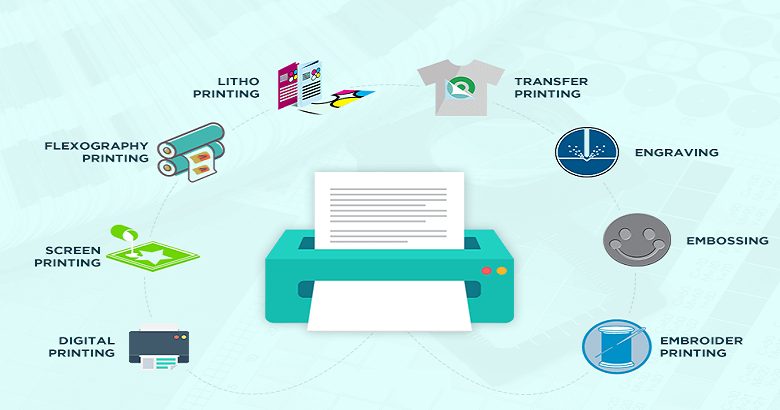Photography books are a beautiful way to showcase your work and tell stories through images. Publishing your photography book can be a deeply rewarding experience, giving you a tangible, lasting product that highlights your creativity. However, the process can be complex and daunting without proper guidance. This blog post will walk you through the steps to successfully publish a photography book.
Conceptualize Your Book
Define Your Vision
Before you even think about the logistics of publishing, take time to define the vision for your book. What story do you want to tell through your photographs? Is there a theme or a particular subject you want to focus on? Your vision will guide all subsequent decisions, from the selection of images to the design and marketing strategy.
Research the Market
Understanding the market is crucial. Look at other photography books, especially those in your niche. What makes them successful? What do they lack? This research will help you find your unique angle and ensure your book stands out.
Identify Your Audience
Knowing your target audience will help you tailor your book to their interests and needs. Are you targeting professional photographers, art enthusiasts, or a general audience? This decision will influence everything from the style of your photographs to the language of your accompanying text.
Curate and Edit Your Photos
Select Your Best Work
Curating your images is one of the most critical steps. Choose photographs that not only fit your theme but also complement each other. Each image should add value to the overall narrative. Aim for a cohesive collection that maintains high quality throughout.
Seek Feedback
Don’t rely solely on your judgment. Seek feedback from fellow photographers, mentors, or focus groups representing your target audience. Constructive criticism can provide new perspectives and help you refine your selection.
Edit Thoughtfully
Editing is more than just enhancing your photos. It’s about ensuring consistency in style and tone. Use editing tools to adjust lighting, color balance, and sharpness, but be careful not to overdo it. Your goal is to enhance your images’ natural beauty, not alter them beyond recognition.
Plan the Layout and Design
Choose a Format
Decide on the size, shape, and binding of your book. Large, coffee-table books are popular for photography collections, but smaller, more portable formats might suit certain themes better. Your choice will affect printing costs and the overall aesthetic.
Design the Layout
A well-designed layout enhances the storytelling aspect of your book. Consider hiring a professional designer if you’re not confident in your design skills. Pay attention to the flow of images, the use of white space, and the integration of text.
Write Captions and Text
Captions can provide context and add depth to your photographs. Keep them concise and meaningful. If your book includes longer texts or essays, ensure they are well-written and contribute to the overall narrative.
Choose a Printing Method
Traditional Publishing vs. Self-Publishing
Traditional publishing involves working with a publisher who handles printing, distribution, and marketing. This route can provide more resources and a wider reach but often requires relinquishing some creative control and a share of profits.
Self-publishing offers more control and potentially higher profits but also means more work. You’ll need to handle everything from printing to marketing.
Find a Printer
If you choose to self-publish, finding a reliable printer is crucial. Look for printers with experience in producing high-quality photography books. Request samples of their work to assess print quality, color accuracy, and binding durability.
Consider Print-on-Demand
Print-on-demand (POD) services can be cost-effective, especially for first-time authors. POD allows you to print books as orders come in, reducing the need for large upfront investments and storage space. However, the per-unit cost is usually higher compared to bulk printing.
Market Your Book
Build an Online Presence
A strong online presence is vital for marketing your photography book. Create a professional website and utilize social media platforms to showcase your work. Regularly post content related to your book, such as behind-the-scenes looks, sample images, and updates on your progress.
Network with Influencers
Collaborate with influencers and bloggers within the photography and art communities. Their endorsements can significantly boost your book’s visibility. Offer review copies to key influencers and ask them to share their thoughts with their followers.
Plan a Launch Event
A launch event can generate buzz and attract media attention. Consider hosting an exhibition of your photographs alongside the book launch. Offer signed copies and use the event to connect with your audience personally.
Use Online Marketplaces
List your book on major online marketplaces like Amazon, Barnes & Noble, and specialized photography book retailers. Ensure your book’s listing is attractive, with high-quality images and a compelling description.
Manage Sales and Distribution
Set a Price
Pricing your book appropriately is critical. Consider your production costs, the market’s standard prices, and the perceived value of your book. While you want to cover your costs and make a profit, setting the price too high might deter potential buyers. Research similar books to find a competitive price point.
Distribution Channels
Decide how you will distribute your book. If you are self-publishing, you might handle distribution, using online platforms, bookstores, and direct event sales. Alternatively, you can partner with distribution services specializing in photography books to reach a broader audience.
Monitor Sales and Gather Feedback
Keep track of your sales and analyze the data to understand which channels are most effective. Use this information to refine your marketing strategies. Additionally, feedback from readers and reviewers should be gathered to understand what works well and what can be improved for future projects.
Legal and Financial Considerations
Copyright Your Work
Ensure all your photographs and text are copyrighted to protect your intellectual property. Registering your copyright provides legal protection and can prevent unauthorized work use.
ISBN and Barcodes
If you plan to sell your book through bookstores or online retailers, you’ll need an International Standard Book Number (ISBN) and a barcode. These are essential for inventory management and sales tracking. You can purchase ISBNs from your country’s designated agency.
Financial Planning
Publishing a book involves various costs, including printing, design, marketing, and distribution. Create a detailed budget and keep track of all expenses. Consider consulting with a financial advisor to ensure you manage your finances effectively.
Post-Publication Strategies
Keep Promoting Your Book
Marketing doesn’t stop once your book is published. Continue promoting it through social media, your website, and other channels. Share reader reviews, host book signings, and participate in interviews to maintain interest in your book.
Engage with Your Audience
Engage with your audience to build a community around your book. Respond to comments and messages and encourage readers to share their thoughts and photos of your book. This interaction can help build a loyal following and increase word-of-mouth referrals.
Evaluate and Reflect
After the initial launch, take time to evaluate the process. What worked well? What challenges did you face? Use this reflection to improve your approach for future projects. Publishing a book is a learning experience; each project will refine your skills and knowledge.
Sums Up
Publishing a photography book is a multifaceted endeavor that requires careful planning, creativity, and perseverance. From conceptualizing your vision to managing sales and distribution, each step is crucial to bringing your project to life. By following this guide, you can navigate the complexities of the publishing process and create a stunning photography book that showcases your unique perspective and talent.
Remember, the journey of publishing a photography book is as much about the process as it is about the final product. Embrace each stage, learn from the challenges, and take pride in your achievement. Your photography book is not just a collection of images; it’s a testament to your dedication and artistic vision.
Frequently Asked Questions
1. What is the first step in publishing a photography book?
The first step is to plan your concept and outline. Decide on your book’s theme, style, and target audience, and organize your photos accordingly.
2. How do I design the layout for my photography book?
You can design the layout using graphic design software like Adobe InDesign or hire a professional designer. Ensure the layout complements your photos and enhances the overall aesthetic.
3. What are my options for printing a photography book?
You can choose between self-publishing and traditional publishing. Self-publishing platforms like Blurb or Amazon KDP offer print-on-demand services, while traditional publishing involves finding a publisher to handle the printing.
4. How do I market my photography book?
Market your book through social media, websites, photography forums, and book events. Consider reaching out to influencers and reviewers in the photography community to gain more exposure.
5. Can I publish a photography book digitally?
Yes, you can publish a digital version of your photography book as an e-book. Platforms like Amazon Kindle, Apple Books, and Adobe Digital Publishing Suite offer tools for creating and distributing digital books.






